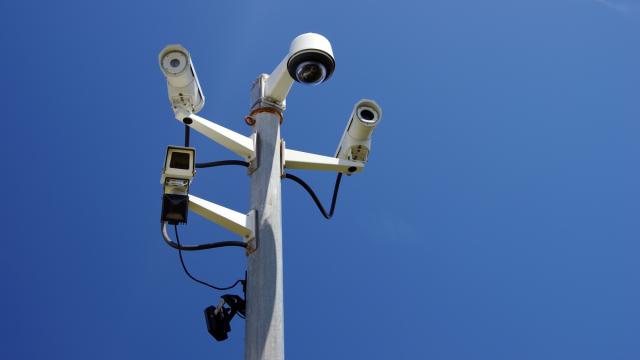The implementation of the federal government’s deeply controversial facial recognition database has taken another step, with news that the driver’s licences of all Victorians have been uploaded to the system.
[referenced url=”https://gizmodo.com.au/2015/09/18-5-million-biometrics-system-will-put-a-face-to-crime-in-australia/” thumb=”https://gizmodo.com.au/wp-content/uploads/2015/09/biometrics-410×231.jpg” title=”The Government’s New $18.5 Million Facial Recognition System Will Put A Face To Crime In Australia” excerpt=”Many Australians have experienced that sinking feeling upon finding their credit card has been skimmed, scrambling to alert their bank while a stranger makes off with their hard earned cash. This can be even worse in cases of identity fraud, with criminals even taking out credit cards in other people’s names or using forged documents with their details. Australia’s newest national security weapon is designed to combat this threat, with an $18.5 million investment called the ‘National Facial Biometric Matching Capability’ to be operational from mid next year.”]
According to a report in the Herald Sun, the system is being tested ahead of a nationwide rollout of the National Driver Licence Facial Recognition Solution (NDLFRS) in December.
Previously, the Victorian government has been reticent to implement the program due to privacy and concerns about civil liberties. In a statement this morning, the government stressed that the data will only be available to state-based agencies ” initially VicRoads and Victoria Police.
“Victoria has agreed only to upload the data to the system and make it available to other Victorian-based government agencies,” the statement reads.
“Any further use ” by federal authorities or other states ” will not be authorised until Victoria is satisfied with the proposed Identity-matching Services Bill currently before the Federal Parliament.”
Perhaps anticipating the obvious sensitivities about surveillance and national security, the state government has chosen to focus on identity theft in its messaging around the programme.
“This technology will help keep government agencies ahead of the pack when it comes to combating identity fraud, which is one of the most common and costly crimes facing our state,” Special Minister of State Gavin Jennings said in a statement.
“We are doing this as part of a national agreement, while ensuring the privacy of Victorians is not compromised.”
This clarification will obviously be of little comfort to Victorians who are concerned about the privacy implications of such a scheme.
Speaking to 3AW on Tuesday morning, Barrister and Australian Lawyers Alliance spokesman Greg Barns pointed to similar schemes in the United States as evidence that privacy concerns are valid.
“One, these databases we are told are easy to hack. Two, there’s been on-selling of data by police forces in the United States. And third, it has led to profiling particular groups, but also incorrect recognition because the technology, at this point in time, can mean you get the wrong person,” Barns told 3AW.
“If it is hacked of course there are a few things that follow. Firstly it can be on-selling to other groups, criminal groups for example, your facial data recognition can be used to create fake documents, fake licences etc.”
The NDLFRS was first announced early last year, pitched as a means of vastly expanding the federal government’s biometric capabilities using a readily available and already digitised marker: driver’s licences. Spearheaded by Home Affairs Minister Peter Dutton, the scheme is ostensibly intended to help law enforcement agencies combat identity fraud, organised crime and terrorism.
A deal was struck with state governments to obtain said data, which would enhance a process ” known, somewhat ominously, as “The Capability” ” which allows the government to compare visual data such as CCTV images to a database of passport photos.
Both Victoria and the Australian Capital Territory have in the past objected to driver’s licences being included in the facial recognition database unless sufficient protections are included in legislation, which is currently before Parliament.
The New South Wales government, on the other hand, has committed to participating in the NDLFRS, despite opposition from some state MPs.
[referenced url=”https://gizmodo.com.au/2018/06/the-australian-government-acic-terminates-its-national-biometric-identification-project/” thumb=”https://gizmodo.com.au/wp-content/uploads/2018/06/biometrics-410×231.jpg” title=”Australia Just Shut Its National Biometric ID Project Down” excerpt=”The Australian Criminal Intelligence Commission (ACIC) has just announced its decision to discontinue the Biometric Identifiaction Services (BIS) project, citing delays as the cause. This announcement comes after the project was suspended earlier this month and NEC Australia staff were escorted out of the building by security on Monday June 4.”]
This article originally appeared on Business Insider Australia.
